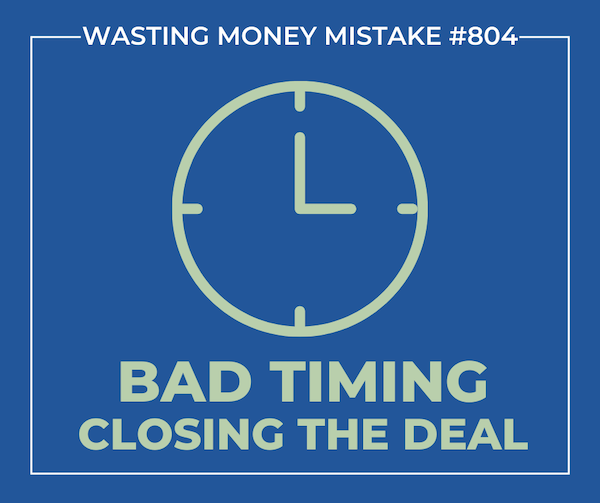Ways credit unions and community banks are wasting money
Credit unions and community banks waste millions of dollars every year. The easiest, fastest way to stop wasting your money is your vendor management program.
As a part of this series, Maple Street’s pros explore ways your institution could be wasting money and what you can do to fix the problem.

Wasting money mistake #804: Bad timing in closing the deal
When is the best time to negotiate a new deal? The answer is simple: When the vendor has a need to book the business.
What happens when you negotiate at the last minute? You lose your advantages and the vendor has the upper hand. You may be forced to leave millions on the table and agree to terms and conditions that greatly favor the vendor.
How to fix this money wasting mistake
At Maple Street, we advocate understanding when all of your contracts are coming due and what the renewal terms are for a reason. Negotiating large contracts – the right way – takes time, and a lot of it. Starting two or even three years out with the planning and evaluation stages provides plenty of time to evaluate the existing vendor, determine what the alternatives are and plan a conversion, if necessary. This part of vendor management is called vendor planning.
Successful negotiation requires three parts: Planning, proposals and education.
In planning, we lay the groundwork for success. The most important questions in this stage are:
- Why are we doing this?
- What is the purpose of the negotiations?
- What is the outcome we want?
- Is it a price issue, terms of the contract, accountability or something else?
Once these questions are answered, it’s time to move onto the proposals stage. After the purpose is determined, you need to decide on the strategy you’re going to take. In other words, what kinds of threats will you hold over the vendor’s head and when will they be introduced? A competitive threat means you have another vendor in the wings. These threats need the time to send out RFPs and review proposals.
The final stage is education. Proposals take significant time to review, evaluate and narrow the field down to two or three vendors through a process of education and vetting. With a possible replacement vendor selected so we have a credible threat, you’re finally ready to begin negotiations.
The more time we have to negotiate, the better the results. Because with time on our side, our negotiators don’t have to accept the vendor’s initial response. After reviewing the results of the first negotiations, Maple Street negotiates again, gaining additional results. Then, we re-review the new proposal and decide with our client if this is the best deal possible. If we think more can be won, and we have time, we’ll continue negotiating until we have achieved the best possible results.
Does your vendor management program include vendor planning?
Maple Street’s Vendor Advantage System®
The Vendor Advantage System® is the only complete vendor management system that offers our tactical vendor planning, including decisions about what vendors you keep, what vendors you won’t and which need fixing.
Maple Street professionals are experts at timing negotiations, evaluating changes required and resources needed, securing expense reductions and implementing a negotiation plan.
Maple Street’s system uses supply chain management principles to manage vendor lifecycles to reduce expenses, improve vendor performance and manage risk. To date, we have saved our clients over $207 million.
If you’d like to stop wasting money because you have no time to negotiate, give us a call at 800-513-6839 or email mssales@maplestreetinc.com. Visit www.maplestreet.com/learn to learn more.